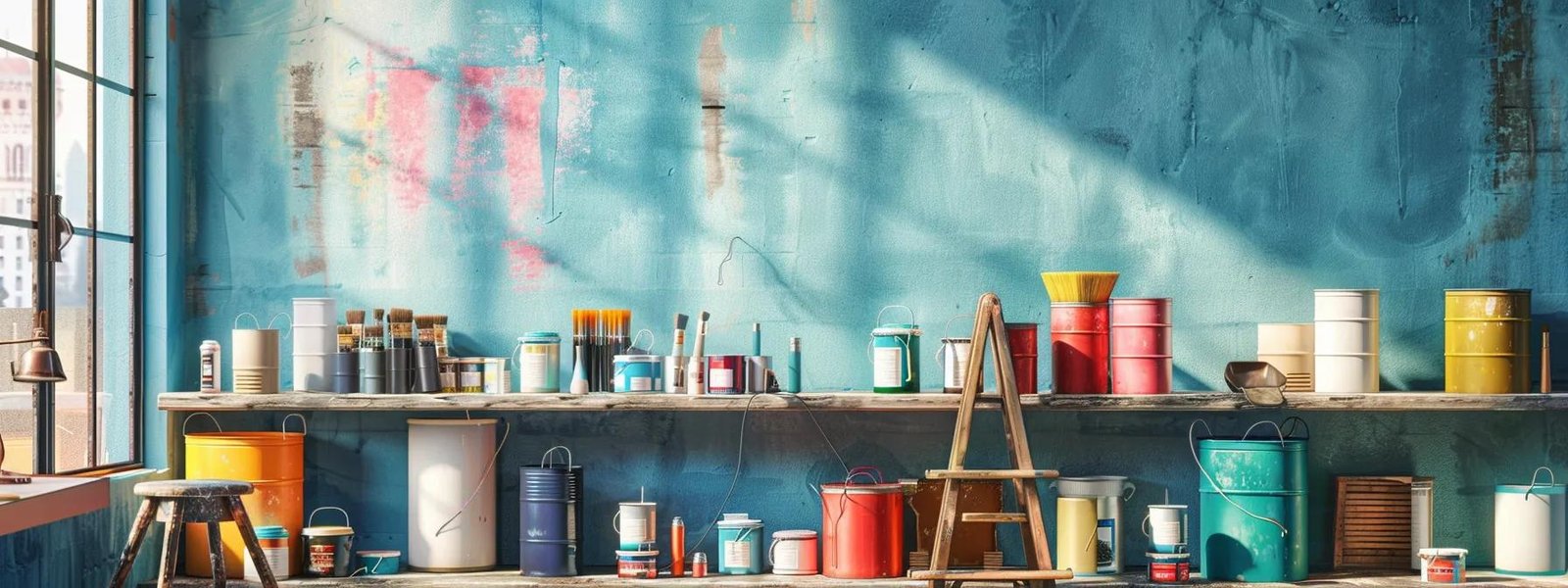Table Of Contents:
- Master Interior Painting Techniques for Stunning Homes
- Foundational Steps for Flawless Interior Home Painting
- Choosing the Perfect Paints for Your Home’s Interior Aesthetic
- Executing Core Interior Painting Techniques for Homes
- Advanced Methods to Create Unique Interior Home Styles
- Ensuring Professional Details in Your Home Painting Project
- Post-Painting Actions for Long-Lasting Stunning Home Interiors
- Frequently Asked Questions
- Final Thoughts
Master Interior Painting Techniques for Stunning Homes
Interior painting projects can transform your home’s appearance and add significant value. For instance, understanding what happens if you don t paint your house can help you appreciate the importance of proper preparation before starting any renovation. This article covers foundational steps, advanced techniques, and key post-painting actions to achieve a professional finish for any renovation. Discover the essential methods and expert tips for stunning home interiors.
Foundational Steps for Flawless Interior Home Painting
Proper preparation is key for a quality paint job. Preparing surfaces ensures better adhesion and longevity while preventing peeling and chipping. Follow expert advice on using the right primers and tools, and always protect your furniture and floors.
Preparing Room Surfaces for an Impeccable Paint Finish
Begin with thorough cleaning, repair cracks with joint compound, and sand uneven areas using mild detergent. This creates a smooth surface that promotes proper bonding of the paint.
Selecting Ideal Primers for Different Wall Conditions in Homes
Choose primers based on wall conditions. Stain-blocking primers work for discoloration or water-damaged areas, while new drywall benefits from a basic primer to seal the surface and enhance adhesion.
Gathering Essential Tools for Efficient Home Interior Painting
Essential tools include high-quality paintbrushes, rollers, trays, and extension poles. Using the correct tools ensures smooth application and minimizes wasted time.
Protecting Furniture and Floors Before Painting Your Home
Cover furniture and floors with plastic sheeting or drop cloths to protect them from spills and splatters. This simple step helps keep your home clean and prevents additional cleanup.
Choosing the Perfect Paints for Your Home’s Interior Aesthetic

The right paint selection affects longevity, finish, and overall interior design. This section reviews various paint formulas, color palette selection, matching sheens to room functions, and calculating the right quantities.
Understanding Paint Types for Lasting Home Interior Results
Interior paints like latex, oil-based, and enamel each have specific benefits. Latex is favored for its quick drying properties, while oil-based paints provide durability for trim and detail work.
Selecting Harmonious Color Palettes for Stunning Home Interiors
Color sets the mood, so choose complementary or analogous palettes to create balance. Tools such as color wheels can help you match colors to your personal style and room purpose.
Matching Paint Sheens to Room Function and Desired Look
Different sheens—matte, eggshell, satin, semi-gloss, and gloss—serve unique functions. Matte hides imperfections in low-traffic areas and semi-gloss or gloss is ideal for moisture-prone spaces, ensuring both look and maintenance meet your needs.
Calculating Accurate Paint Quantities for Home Projects
Accurate measurement of wall and ceiling areas, less windows and doors, guides how much paint is necessary. Following product guidelines prevents wastage and ensures a budget-friendly project.
Executing Core Interior Painting Techniques for Homes
Proper technique is crucial for a smooth finish. Master even coating, precise cutting, and efficient tool use to achieve professional results on your walls and ceilings.
Achieving Smooth and Even Coats With Brushes and Rollers
Apply a thin, crisscross-pattern coat to tackle wall textures, followed by a second uniform layer. Avoid overloading the tools to prevent drips and uneven coverage.
Proper Brush Techniques for Trim and Detail Work in Homes
For detailed work, use angled brushes to cut in along edges. This precision prevents bleeding and maintains clear separation between colors, enhancing overall aesthetics.
Effective Roller Application for Walls and Ceilings
Rollers work best on large flat surfaces. Maintain a steady motion starting from one corner while choosing roller covers suited to your wall’s texture for the best finish.
Cutting in Precisely for Clean Edges in Your Home
“Cutting in” means painting edges where rollers cannot reach. Use a small brush to outline corners and then fill with a roller, ensuring crisp, professional borders.
Advanced Methods to Create Unique Interior Home Styles

Advanced techniques allow you to add decorative touches that reflect your style. Explore methods that bring texture, depth, and personality to any room.
Applying Decorative Paint Finishes for Textured Walls
Techniques such as sponging, rag-rolling, or using a comb tool create interesting textures. These decorative finishes transform plain surfaces into artistic focal points.
Creating Accent Walls to Define Spaces in Your Home
An accent wall uses contrasting colors or patterns to break the monotony of standard interiors. This technique highlights one wall, defining different zones in open spaces.
Stenciling Patterns for Personalized Home Interior Designs
Stenciling introduces intricate designs without overwhelming a space. Carefully apply stencils with a sponge or brush to add a high-impact, personalized touch.
Utilizing Color Washing and Glazing Techniques in Homes
Color washing applies a diluted paint layer for a soft, translucent effect, while glazing adds depth by subtly enhancing the base color. Both techniques can dramatically alter a room’s ambiance.
Ensuring Professional Details in Your Home Painting Project
Attention to detail elevates a paint job from amateur to professional. Apply these final touches to refine the look and extend the durability of your work.
Achieving Razor-Sharp Lines Between Colors and Surfaces
Use painter’s tape and careful brush strokes to create defined lines. Removing the tape while the paint is still slightly wet avoids peeling and maintains crisp borders.
Painting Tricky Areas Like Windows and Doors With Finesse
Windows and doors require extra care. Use quality brushes and several thin coats to manage transitional areas for an attractive, long-lasting result.
Correcting Drips and Mistakes During Home Painting
Mistakes happen. Smooth out drips and touch up spots immediately with a clean brush or sponge to ensure a flawless overall look.
Proper Paint Can Storage and Brush Care for Future Use
Store paint properly by sealing cans tightly and cleaning brushes immediately. This practice preserves your supplies for future projects.
Post-Painting Actions for Long-Lasting Stunning Home Interiors

After painting, follow essential steps to ensure your work remains pristine. Proper drying, cleaning, and maintenance are as crucial as the preparation and application.
Allowing Adequate Drying Time for Optimal Paint Curing
Wait for each coat to dry and cure according to manufacturer guidelines. Proper curing prevents smudges and ensures durability.
Cleaning Up Your Workspace and Painting Tools Thoroughly
Clean all brushes, rollers, and trays right away to extend their lifespan. A tidy workspace also prevents accidental marks on freshly painted surfaces.
Performing Touch-Ups for a Perfect Final Appearance
Inspect your work for any missed spots or imperfections. Small touch-ups can significantly refine the final appearance.
Maintaining Painted Surfaces for Enduring Beauty in Your Home
Regular cleaning with a soft cloth and mild detergent helps preserve the finish. Avoid abrasive materials that could damage the surface, ensuring your investment stays beautiful.
Frequently Asked Questions
Q: How do I properly prepare walls before painting?
A: Clean, repair imperfections, and sand surfaces to ensure optimal paint adhesion and a smooth finish.
Q: What type of primer should I use on different surfaces?
A: Use a stain-blocking primer for discolored areas and a basic primer for new drywall to enhance adhesion.
Q: How can I achieve clean edges when cutting in?
A: Use a high-quality, angled brush combined with painter’s tape, removing the tape while the paint is still damp.
Q: What is the importance of proper drying time between coats?
A: Sufficient drying time prevents smudging and ensures the paint cures properly, resulting in a durable finish.
Q: How should I care for my painting tools post-project?
A: Clean brushes and rollers immediately after use and store paint cans tightly sealed to ensure they remain effective.
Final Thoughts
This article outlined key steps from surface preparation and priming to advanced techniques like stenciling and color washing. Every phase—from selecting tools to performing post-painting maintenance—is essential for achieving a professional finish that transforms your home. By following these expert guidelines, your interior painting project will not only look flawless but also stand the test of time. Embrace these techniques to bring out the best in your home interiors.


